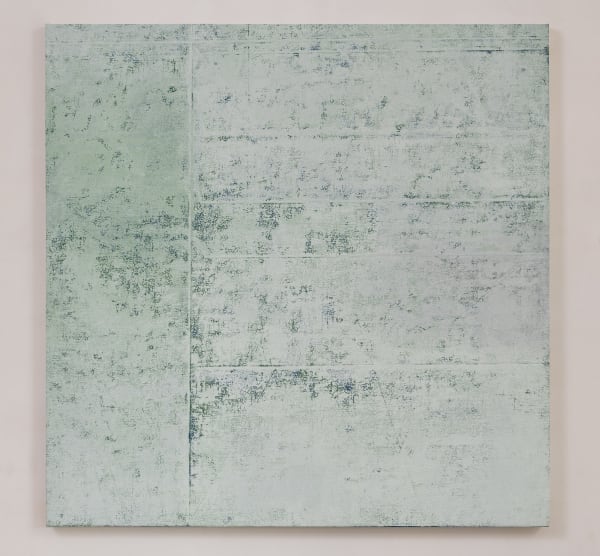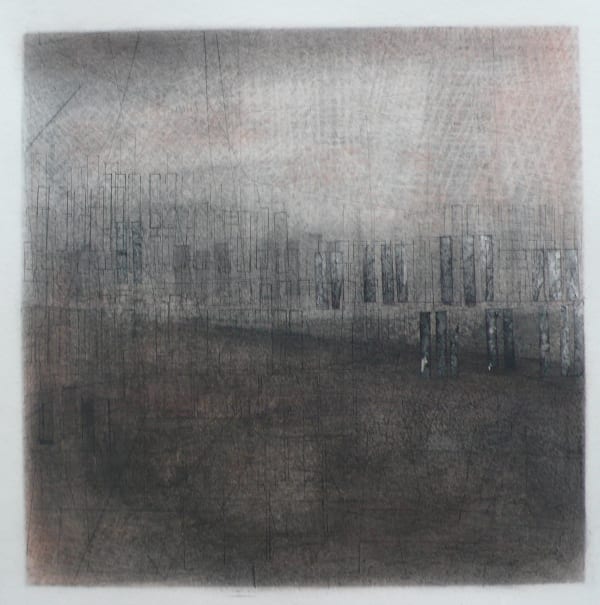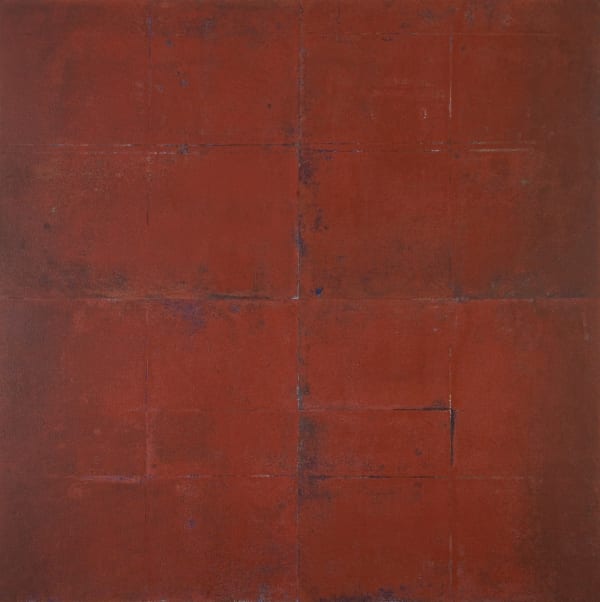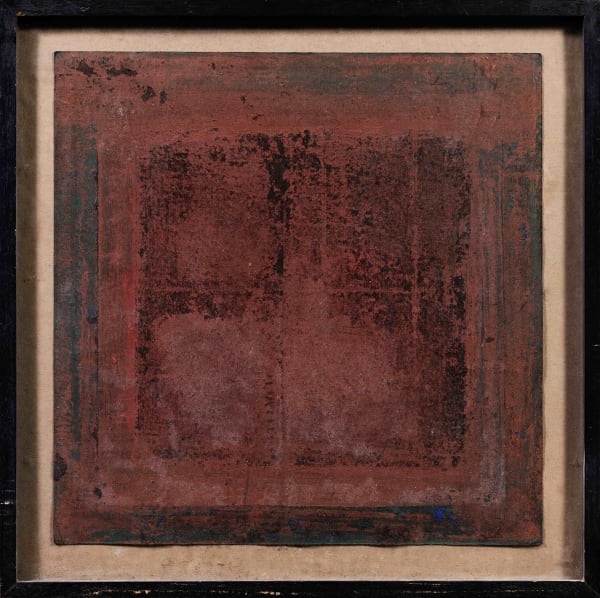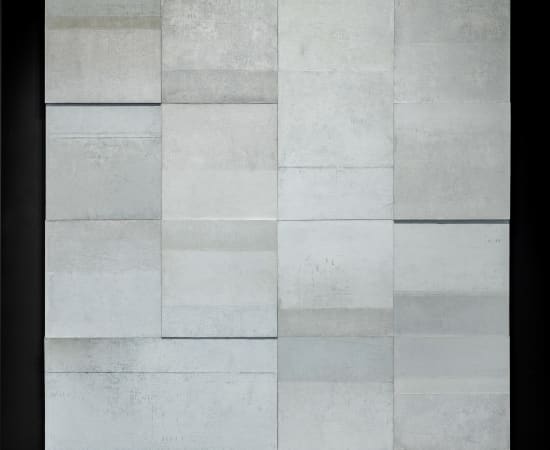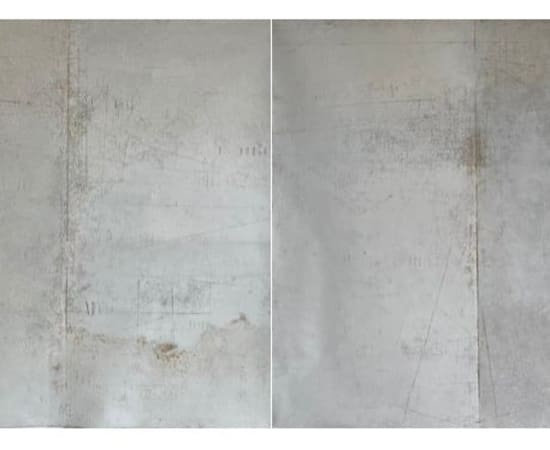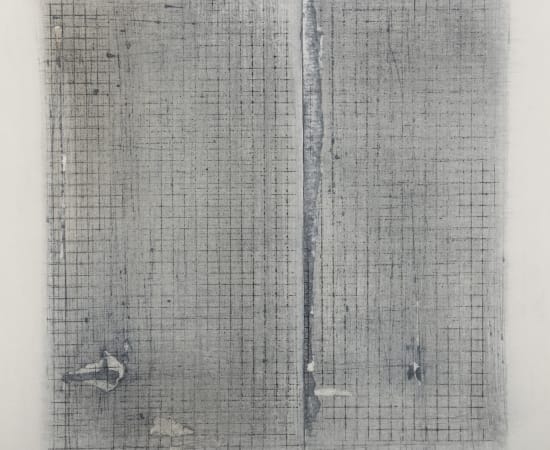Sheetal Gattani Indian, b. 1968
b. 1968, in Mumbai, India
Sheetal Gattani is a Mumbai-based artist, recognised for her distinctive abstractionist works and stirring visual imagery. Gattani completed her Diploma in Art Education (1990) and Master of Fine Arts (1993) from the Sir JJ School of Art, Mumbai. From her early days as a student, she challenged forms of representational art by developing an evocative and process-oriented approach that reflected her preoccupations with notions of formlessness and colourlessness. Her practice expresses a conscious disassociation from the self, resulting in a free form engagement with her mediums and materials.
Despite living in a city that teems with stimulants, both visual and aural, Gattani’s works offer a sense of quiet. Her earthy, minimalist paintings - devoid of discernible motifs - absorb viewers with their incredible depth, provoking an introspective experience. Her palette is inspired by spaces, materials, and the environment she occupies, and she applies numerous layers of paint to her surfaces, privileging textural and material explorations over specific forms or familiar structures. Working at fixed hours on a daily basis, Gattani’s practice relies on intensely focused, unremitting, and ritualised labour.
For the first twelve years of her practice, Gattani worked on small 10 x 10 inch surfaces of black absorbent paper, which she would layer with swathes of watercolour paint using a loaded brush. The art historian Roshan Shahani has described, “an obliteration of the black paper ground on which she starts the multiple layering, results in the opposite process of revelation, a random exposure of the under paint, emerging as gashes, marks and penumbras." Black paper was a medium of choice for the artist, as she found it much more welcoming in comparison to white surfaces. The many coats of colour she would apply would cause Gattani’s surfaces to fragment, swell, or even tear. Pushing her materials to an extreme, her paintings would come to embody a greater sense of dimensionality. In the catalogue of her 2001 solo exhibition at Gallery Chemould, the late artist, Mehlli Gobhai wrote, “What makes these paintings so incredibly rich is the presence of the black lurking deep within them. Layer over layer is worked on and the black is transformed into a sepulchral lightness. The complex layering gives the work a sense of time that I have always strongly felt in all her work and which makes it so unique...”
While watercolour suited Gattani’s temperament and process through its affinity with notions of chance and spontaneity, her practice showcased a major transition in 2009. After over a decade of concentrated work using fixed mediums and dimensions, the artist began to experiment with acrylic paint on canvases. This significant shift enabled her to expand the scale of her painterly explorations, overcoming the physical constraints of paper. Like her watercolour works, Gattani’s canvases that contain over twenty-five to thirty layers, employ an abstractionist language to invoke a rhythmical interplay of textures and colours, and go beyond to also feature subtle geometric or architectural reveries. While they appear monochromatic from a distance, a closer engagement reveals hints of underpaints that burst, tear, or bleed through to disrupt the seeming precedence of the dominant colours. Viewers are thus invited to excavate the ostensibly flat surfaces, and discover the numerous micro incidents and appearances that lie underneath. Gattani’s experiments explore the formal potentialities of shadow, light, and lines and recall her early works in the way they represent her concerns with time and memory. She builds her compositions intuitively, guided by her materials, and factors governing her surroundings such as natural light and shadows. Absorbed in the present moment, she sits on the floor of her studio and paints, meditatively.
In 2015, Gattani attended a drawing camp, where she was confronted with white paper to work on. In an attempt to evade the challenge that this surface presented, she first blackened the paper with charcoal, and then began working on it through repetitive processes of erasure and incisions drawn by a blade. These gave way to a new body of work in her practice, as Gattani began engaging further with charcoal and dry pastel on square-shaped surfaces. Through deliberate additive drawings and measured, subtractive cut-outs, she explores principles of structure, balance, and orientation. Such drawings, including her White Grass series, featured at her 2016 solo exhibition at Chemould Prescott Road, titled ‘46 Pillars.’ This exhibition notably also included a site-specific art installation that reimagined facets of the city, depicting them through different vantage points within the space of the gallery. Presenting viewers with the opportunity to re-encounter what is considered somewhat familiar or even banal, Gattani articulated her interest in the values of everyday objects and experiences.
Encapsulating her approach, the artist has expressed, “Abstraction is in its deepest sense, based on realism, as in, reality – reality of the present moment, free from any thoughts, memory-conditioning… only that pure present moment existing. So painting is a ‘time-manifested’ process and I become only a means.” With a tremendous sense of concentration and obsession, Gattani pushes her mediums and materials to an extreme, as she relentlessly employs techniques of layering. Through her approach towards making, as well as the final manifestation of her works, she invites closer deliberations on the nature of attention, itself.
The artist lives and works in Mumbai, India.
-

In the making: Drawing, Refining, Revising
Group Show 2 Aug - 3 Sep 2024In the Making: Drawing, Refining, Revising is a group exhibition where we have brought together 15 artists from the gallery to whom drawing is the essence of studio life: a...Read more -

Part 1: Framing | CheMoulding: Framing Future Archives
Curated by Shaleen Wadhwana | 60 Years of Gallery Chemould 15 Sep - 22 Oct 2023Anant Joshi, Archana Hande, Atul Dodiya, Bhuvanesh Gowda, Desmond Lazaro, Dhruvi Acharya, Gigi Scaria, Jitish Kallat, Madhvi Subrahmanian, Meera Devidayal, Mithu Sen, NS Harsha, Ram Rahman, Ritesh Meshram, Shakuntala Kulkarni,...Read more -

Modus Operandi III: Together Alone
Group Show 11 Aug - 10 Sep 2022The premise of Modus Operandi began and continues with an exhibition of Chemould's roster of artists - every iteration presents us an opportunity to exhibit them under one roof, in...Read more -

new canvases
Sheetal Gattani 14 Oct - 13 Nov 2021Sheetal Gattani is a painter of uncertainty, of suspense, of adventure. Her canvases contain over twenty-five to thirty layers; employing an abstractionist language to invoke a rhythmical interplay of textures...Read more -

Modus Operandi II
Group Show 18 Jul - 24 Aug 2019Synonymous with the first edition of Modus Operandi, where we brought together over 25 Chemould artists and their unique artistic language in dialogue with each other through various mediums, we...Read more -

Modus Operandi
Group Show 13 Jul - 18 Aug 2018This July, Chemould Prescott Road presents Modus Operandi , a show that has been devised by Shireen Gandhy and the Chemould team, brin ging together a large number of Chemould...Read more -

46 Pillars
Sheetal Gatani 15 May - 30 Aug 2016Chemould Prescott Road re-envisioned itself into an open studio as artist Sheetal Gattani created her site-specifiic installation titled 46 Pillars over the last three months. The gallery walls will also...Read more -

New Works
Sheetal Gattani 2 - 21 Feb 2009Sheetal Gattani’s paintings speak many languages and conjure up many emotions. Layer upon layer of colour with no discernable form lend a sense of timelessness to the works – we...Read more




